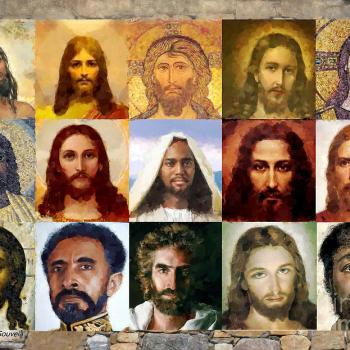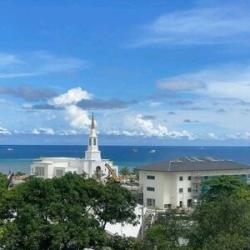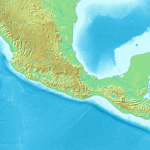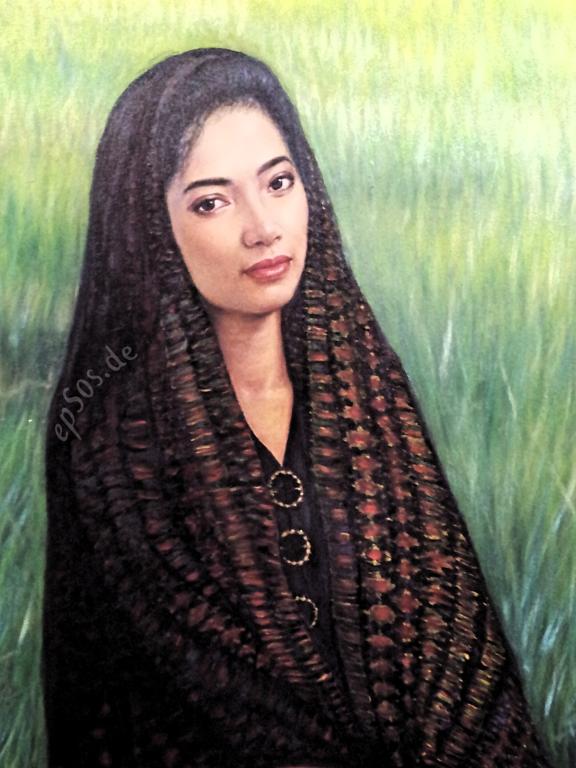
Muslim women, even devoutly believing Muslim women, wear a variety of clothing styles. Some follow no particular rules of dress (except modesty), while, at the other extreme, some others believe in covering every part of their bodies — even perhaps including their eyes — when in public or in the presence of unrelated adult men.
Here’s a brief guide to some of the chief types of distinctively Islamic dress for women:
***
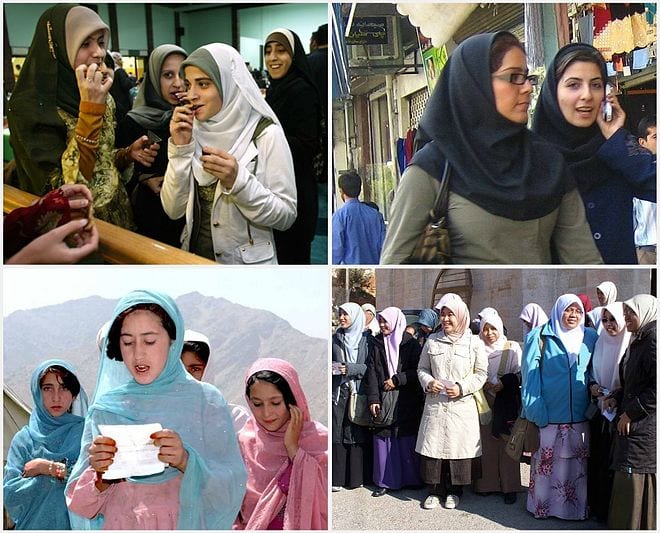
In Qur’anic and other early classical Arabic, the term khimār (خمار) denotes a headscarf, while ḥijāb حجاب) ) refers to a literal or metaphorical “partition” or “curtain.” Thus, for instance, ḥijāb seems indicate a curtain separating visitors to the Prophet Muhammad’s house from the lodgings of his wives. By extension, it has come to refer more generally to the public segregation of women from men and, even more generally, to the principle of modesty — which can cover behavior, as well as dress. But it can also designate the veil that separates mortal humans or the world from God.
Typically today, though, the word ḥijāb names the headscarf commonly worn by Muslim women that covers the head, neck, and chest, but leaves the face clear. This is the most familiar type of headcovering among Muslims in America and the West. The scarves can come in different colors and shapes and are often color-coordinated with the rest of a woman’s clothing.
***
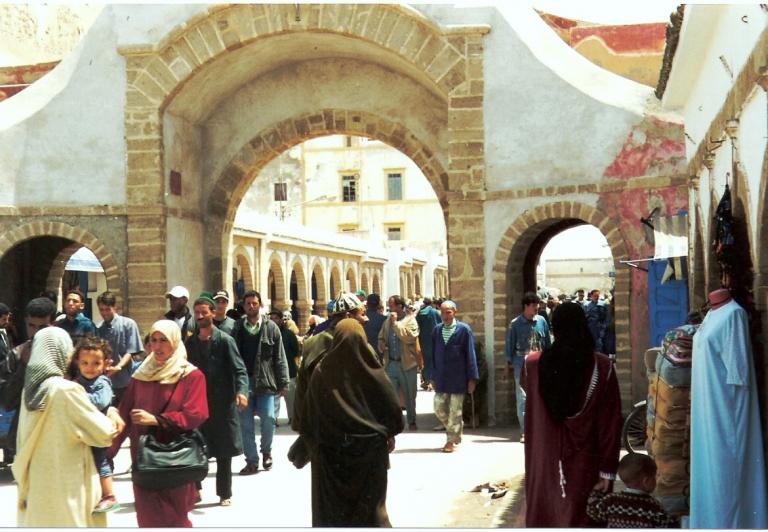
The jilbāb or jilbaab (جِلْبَاب) is a long and loose-fitting outer garment worn by many Muslim women. It covers the entire body and serves to conceal the body’s shape. It can be worn in conjunction with a variety of head-coverings.
***
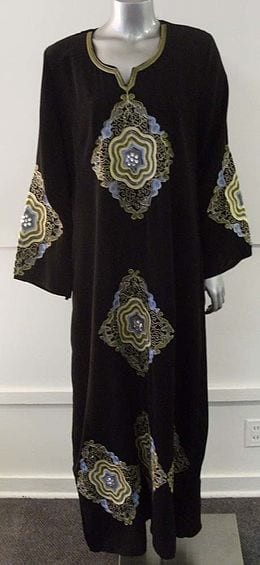
(Wikimedia Commons public domain image)
The jilbāb is difficult (for me, at least) to distinguish from the abaya (عباية) or “cloak,” the simple, loose over-garment or robe-like dress that is worn by many women across North Africa and in the Arabian Peninsula. Traditionally black and covering the entire body (except feet, hands, and head), it may be either a large square of fabric draped from the shoulders or head or a long kaftan. Like the jilbāb — possibly because it’s the same thing; what do I know? — it can be worn with different styles of head-covering, with or without gloves, etc.
***
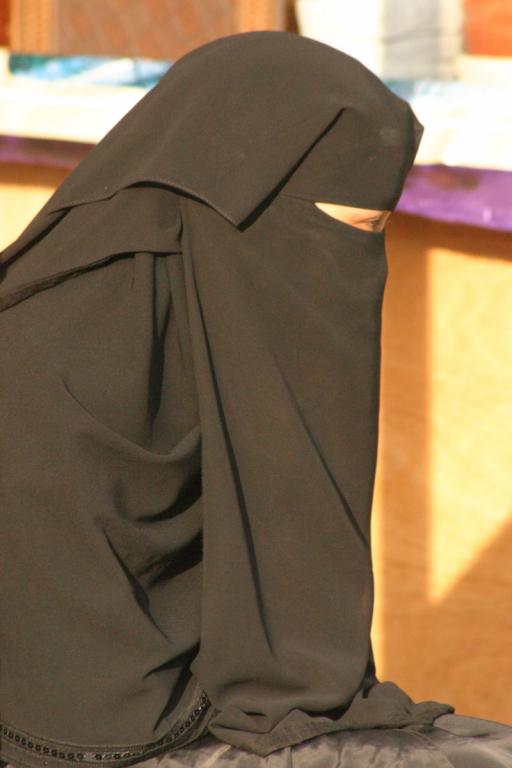
(Wikimedia Commons public domain image)
The niqāb (نِقاب) or “[face] veil” covers a woman’s face except for her eyes and usually also extends to her mid-back, as well, in order to cover her hair. While a large majority of Muslim scholars believe that the ḥijāb is obligatory, only a rather small minority declare the niqāb required. (Curiously, covering of the face is actually forbidden during the annual rituals of the hajj or pilgrimage in Mecca.) Women wearing the niqāb will often also wear gloves on their hands and, outdoors, perhaps sunglasses to cover their eyes.
The face veil antedates the rise of Islam in Arabia, where, among other things, it probably served to protect a woman’s face from sandblasting and intense sun. It seems to have come originally from the region of modern Saudi Arabia called Najd, which is still today a center of Salafi fundamentalist Islam, and, although it has spread beyond Arabia, it remains especially common on the Arabian Peninsula. Across the Islamic world generally, it is often seen as a sign of extreme fundamentalism and is regarded as being on the “fringe.”
***
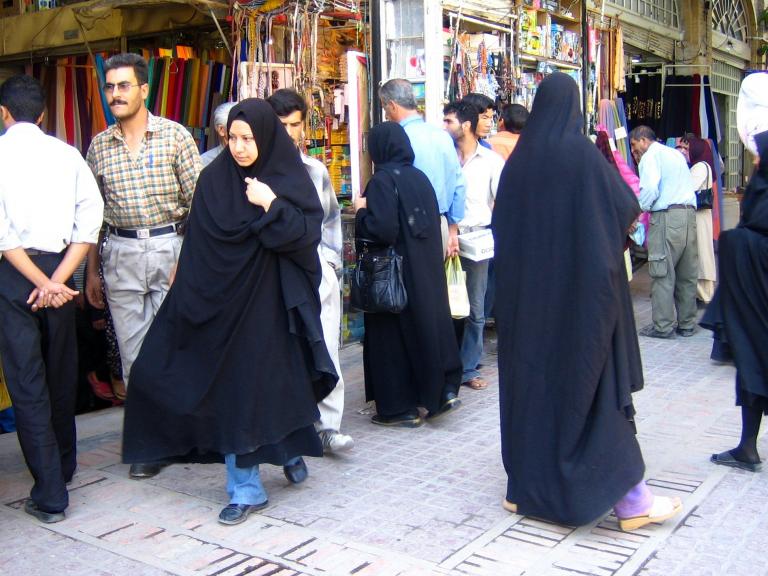
The chādor (in Persian, چادر) is an outer garment or open cloak — typically black in color — that is commonly worn outside or in public spaces, mainly by women in Iran (where it is legally required) but also in Iraq and in some additional countries under Persian cultural influence, as well as in other areas where Shi‘a Islam predominates (e.g., in southern Lebanon). It is a semicircle of fabric that is open down the front and is of full-body length. It has no hand openings, buttons, or clasps; the woman wearing it throws it over her head and then holds it closed in front. Like the ḥijāb, it leaves the face uncovered.
***
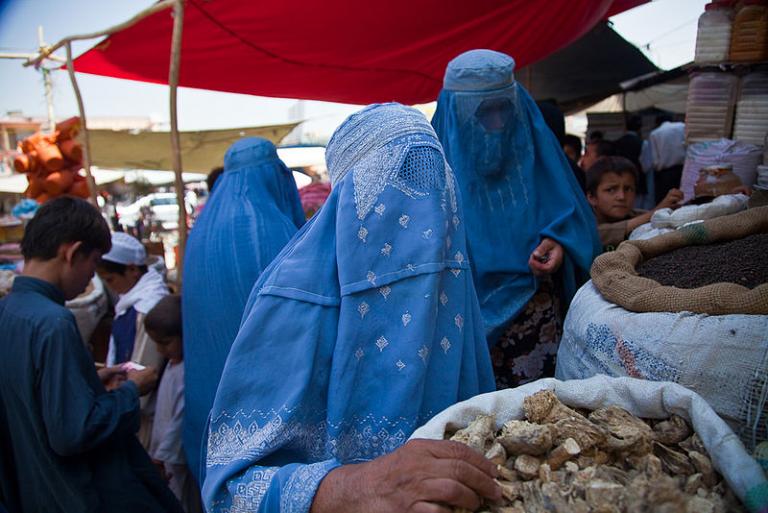
(Wikimedia Commons public domain image)
The burqa (Persianبرقع ) is the most concealing of all Islamic women’s dress styles. Like the chādor, it covers the entire body. Unlike the chādor and the niqāb, however, it covers the entire face, including even the eyes, although it includes a mesh cloth through which the woman wearing it can still see (somewhat). It is characteristic of Afghanistan and very immediately surrounding areas.




